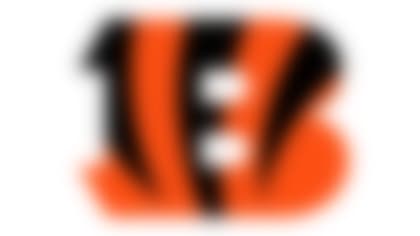Concussions in the NFL -- how they occur, how to treat them, how to help prevent them -- used to be an issue shrouded and feared by nearly all involved, including players.
A concussion suffered in a game might have been treated by asking a player how many fingers were being held in his face and what was the day. If the answers were deemed proper, he was plopped back onto the field.
And the player was all in. For all of his football life, he believed a "ding" was simply that and he should ignore pain, never sit out, always fight for his position.
Everyone involved has become more knowledgeable and more courageous in dealing head-on with this sensitive issue.
And that is what the Sports Concussion Institute's third annual concussion summit in Los Angeles is about. This summit on Friday will be attended by more than 200 people, including athletic trainers, administrators, coaches, parents and others representing all levels of football, as well as representatives from various high-velocity sports.
Dr. Michael Collins will attend.
He is involved in one of the nation's leading concussion research venues at the University of Pittsburgh Medical Center.
"Our knowledge has grown, America has more experts and certified people working diligently in this field than ever before and things are improving," Dr. Collins said. "The NFL is a huge part of that."
Some of the scariest concussion-related stories in recent NFL history include the examination of brains of deceased players Andre Waters and Mike Webster. Waters was found to have the brain expected in an 85-year-old man. Dr. Julian Bailes, chairman of the department of neurology at West Virginia University, assisted in examining both.
"We also had the brain of wrestler Chris Benoit sent by his father for examination," said Dr. Bailes, who also worked from 1988 through 1997 as a Pittsburgh Steelers team physician. "These were extreme cases. These are the cases we are working so hard to prevent. Because we are still learning so much about brain function, it is fair to say that their cases were not the total result of concussions. We have made more strides in concussion knowledge and treatment in the last 10 years than we had in all the history before that."
Agent Leigh Steinberg, who has been at the concussion forefront for more than 30 years, offered a smaller window of revelation.
"I'd say in the last three years we have had more advances in awareness and treatment than in our entire history," Steinberg said.
"Going back to my earliest players from the '70s, the diagnosis and treatment of concussions was Neanderthal," he added. "A concussion was only when a player was knocked out. The phenomena was largely unrecognized. The injury was subjective; it was not like he was wearing a cast, people would say. We began to raise the issue of how many concussions were too many to risk. What were the long-term issues? Players began to ask themselves, it is one thing at age 40 to feel back or knee pain when picking up my children, but totally another if I won't be able to recognize them. It became an issue with a quantum leap of seriousness. We had three concussion seminars in the '90s where we began to ask for standardized diagnosis, eliminating spearing in football, helmet changes, turf changes and more. The momentum has built. The technology has grown."
And so has understanding and treatment.
The definition is clearer: A concussion is a blow to the head or neck interrupting brain function. Identifying them is now more reliant upon memory, cognitive and verbal fluency tests rather than soley upon brain scans.
Professionals now agree that college and NFL players who suffer concussions should be held out for 24 to 72 hours. For the high school player, it is generally considered seven days, though Dr. Collins says that he will present a new study at the summit that reveals that only 40 percent in that group recover in seven days and that most require more time.
"We also know and stress," said Dr. Tony Strickland, Sports Concussion Institute director, "that the answers for improvement lie in rule enforcement, better equipment, awareness of symptoms, conditioning and nutrition. The platform is multi-layered."
Dr. Strickland and other experts emphasize that concussion risks are distributed across the entire population, not just the NFL. Professional football players represent a "tiny" percentage of overall concussions, but the sport remains the primary symbol for sports concussions. Thus, the NFL can set the standard for concussion treatment. In many ways, it has.
Commissioner Roger Goodell took these, among several other actions, two years ago:
» Set the tone by stating: "At no time should competitive issues override medical issues. Safety comes first."
» Remanded each NFL team's medical staff to attend a concussion summit in Chicago and for the first time invited outside league experts to meet with the league's concussion experts.
» Instituted mandatory brain baseline testing for each NFL player, a test that is used to compare what the brain looked like and how it functioned before a concussion, and, thus, how it should recover.
» A "whistle-blower" system that allows anyone in the NFL to anonymously report when doctors are pressured to clear players or when players are pressured to play.
"These actions were a revolutionary breakthrough," Steinberg said. "It was like when the Berlin Wall fell. And for it, Roger Goodell deserves a place as a historical pioneer in modern concussion enlightenment."
Setting the stage for the summit
One focus of the summit on Friday is the exploration of DHA (docosahexaenoic acid) and its promising effect on concussion prevention and treatment. DHA is a dietary source of Omega-3 fatty acids that is a fish oil derivative.
It has shown effectiveness in heart treatment and experts are concluding it can be a tool for concussion issues.
"Understanding the brain has always lagged behind understanding the heart," Dr. Strickland said. "But everyone is excited about DHA. It is a natural animo acid that has shown some progress in working on Alzheimers Disease. It is not a steroid. It is a building block for the central nervous system."
-- Leigh Steinberg
Dr. Bailes added: "I have done work on this in my laboratory. It has positive effect on the brain and retina. It helps the ability of the brain to repair. We know many cases of microscopic injury where the brain works to repair itself. We are seeing that DHA helps that process. It's a jell-cap. It's exciting."
The Steelers disclosed after winning Super Bowl XLIII that their players have used DHA. The Cleveland Browns will use it. The San Francisco 49ers have shown interest. Several college teams, including Texas A&M, are on board.
"I think every NFL team will soon," Steinberg said.
And likely that will move swiftly forward to the college front, high school, even with momentum toward the general populace, Dr. Strickland said.
"The question used to be what is your cholesterol level?" he said. "Next, it is what is your DHA level?"
As the NFL continues to deal with the concussion issue, the trickle-down effect is discernable. John Breckenridge, a senior vice president for Wells Fargo, has worked with Dr. Strickland for the last year developing a multi-million dollar concussion insurance program for California high school athletes.
"We're very close and we think it can be in place for the upcoming season," Breckenridge said. "We want to provide insurance programs that offset the financial burden for providing for concussion care and treatment. We want high school athletes to have that kind of specialty care. We believe we can build it nationwide. Sports concussions have come to the forefront. And part of that is due to the NFL, especially with their action of mandating concussion baselines."
Dr. Collins said that type of concussion insurance "could be monumental for high school players." He said this kind of movement would not have happened without the NFL placing a bold spotlight on concussions.
It is a different concussion climate, Steinberg said.
"It is the most optimistic time," he added. "We have been able to move to a time of real hope in lightening speed."




